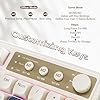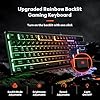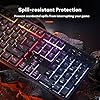Table of Contents
The Best Practice Techniques for Piano Beginners
Embarking on the journey of learning piano is an exciting endeavor, filled with the joy of exploring musical expressions and the challenges of mastering new skills. For beginners, effectively navigating this path can often determine how enjoyable and successful their learning experience will be. In this guide, we will discuss best practice techniques that are tailored specifically for those starting their piano journey. These methods not only aim to enhance the efficiency of your practice sessions but also to ensure that every minute spent at the keyboard contributes positively towards your musical growth.
Breaking Down Practice Sessions into Manageable Chunks
Developing strategic practice sessions is crucial in allowing piano beginners to progress efficiently and maintain interest. Each practice session should be thoughtfully broken down into manageable chunks to maximize learning and reduce fatigue.
P71 Digital Piano Review and Guide
$0.00 (as of November 22, 2025 14:40 GMT -08:00 - More infoProduct prices and availability are accurate as of the date/time indicated and are subject to change. Any price and availability information displayed on [relevant Amazon Site(s), as applicable] at the time of purchase will apply to the purchase of this product.)Wicked - A New Musical Songbook by Stephen Schwartz | Piano Vocal Selections with 13 Broadway Hits | Sheet Music for Piano Voice and Guitar | Authentic Arrangements for Performers Students and Fans
31% OffReady for Theory Level 3 Piano Review Book (Ready for Theory Piano Review Books)
$12.95 (as of November 22, 2025 14:46 GMT -08:00 - More infoProduct prices and availability are accurate as of the date/time indicated and are subject to change. Any price and availability information displayed on [relevant Amazon Site(s), as applicable] at the time of purchase will apply to the purchase of this product.)The Piano Proficiency Exam Review Book
$14.57 (as of November 22, 2025 14:43 GMT -08:00 - More infoProduct prices and availability are accurate as of the date/time indicated and are subject to change. Any price and availability information displayed on [relevant Amazon Site(s), as applicable] at the time of purchase will apply to the purchase of this product.)Starting with a warm-up is essential. This could involve five to ten minutes of simple exercises such as scales, arpeggios, or five-finger patterns. The aim is not only to warm up the fingers but also to engage the brain, setting a focused tone for the practice session.
The bulk of the practice session should be devoted to new pieces or more challenging sections of existing pieces. Breaking down these pieces into sections helps manage the workload. Spend about 15-20 minutes on this, depending on the session length. Focus initially on small sections—perhaps just a few measures—and gradually integrate those into larger sections. Use slow, deliberate practice to ensure accuracy and precision.
Allocate time for technique and expressive playing, which may include focusing on dynamics, phrasing, or other expressive elements of music. This could take up another 10-15 minutes. During this phase, work on expressive techniques like legato, staccato, and dynamics, which are pivotal in playing music that is emotionally engaging.
It’s beneficial to end sessions by revisiting old pieces and working on maintaining the repertoire. Spend about 10 minutes playing pieces that are already learned to keep them fresh and showcase your progress. This part of the session, while often overlooked, helps in solidifying memory and confidence.
Scales and Finger Exercises for Piano | Classical Technique Sheet Music Book for Beginners and Intermediate Players | Major and Minor Scales and ... Library of Musical Classics, 2107)
$9.99 (as of November 22, 2025 23:16 GMT -08:00 - More infoProduct prices and availability are accurate as of the date/time indicated and are subject to change. Any price and availability information displayed on [relevant Amazon Site(s), as applicable] at the time of purchase will apply to the purchase of this product.)A Dozen a Day Preparatory Book -Technical Exercises for Piano | Beginner Piano Technique Exercises for Kids | Piano Method Book for Finger Strength and Independence | Piano Warmups for Students
Piano Adventures - Level 1 Technique & Artistry Book
$5.99 (as of November 19, 2025 04:32 GMT -08:00 - More infoProduct prices and availability are accurate as of the date/time indicated and are subject to change. Any price and availability information displayed on [relevant Amazon Site(s), as applicable] at the time of purchase will apply to the purchase of this product.)Beginner Piano Lessons for Kids Book: with Online Video & Audio Access
$11.99 (as of November 22, 2025 05:19 GMT -08:00 - More infoProduct prices and availability are accurate as of the date/time indicated and are subject to change. Any price and availability information displayed on [relevant Amazon Site(s), as applicable] at the time of purchase will apply to the purchase of this product.)Conclude with a cooldown period similar to the warm-up but focused more on gentle, relaxing pieces or exercises. This five-minute period helps in transitioning out of an intense practice mentally and physically, aiding in muscle relaxation and mental clarity.
Incorporating Warm-Up Exercises into Your Routine
Integrating warm-up exercises before delving into your piano practice is essential for both limbering up your fingers and establishing a focused mindset. Here are some effective warm-up exercises specifically designed for piano beginners:
Start with simple finger stretching exercises to increase mobility. Play each finger slowly and deliberately on the piano, pressing each key firmly to build muscle strength and memory.
Practicing scales is a cornerstone warm-up exercise that helps you understand key signatures and improve finger agility. Start with simple Major scales like C Major, and gradually increase the complexity to minor scales and modal scales.
Similar to scales, arpeggios are great for developing finger strength and coordination. Begin with triadic arpeggios in the primary keys and gradually move to more complex patterns.
Initiating with simple exercises like playing different rhythms or articulations with each hand can significantly improve your hand independence. Start slowly and increase speed as your confidence builds.
Incorporate rhythmic drills to build timing and rhythm accuracy. Use a metronome and play various rhythms with scale runs or simple chord progressions. This will help in enhancing your timing precision and synchrony between both hands.
Begin your practice sessions with sight-reading very simple pieces or exercises. This not only warms up your mind for more complex musics but also gradually improves your sight-reading skills.
Setting Achievable Practice Goals
For beginner piano players, setting achievable practice goals is vital to ensure consistent progress and sustained interest in learning. Tailoring practice objectives at the right level of challenge is key to fostering growth and satisfaction.
Goal 1: Establish a Consistent Practice Routine
Committing to a regular practice schedule is foundational. Beginners should aim for 15-30 minutes per day, at least 3-5 days a week. Consistency helps in developing muscle memory and reinforcing learned skills.
Goal 2: Focus on Small Sections of Music
Instead of tackling entire pieces, beginners should focus on one small section at a time. This could mean practicing a specific measure or a difficult passage until it can be played flawlessly three times in a row. This segmented approach makes practice more manageable and productive.
Goal 3: Set Weekly Objectives
Weekly goals maintain focus and motivation. For instance, a beginner could aim to learn the notes of a new piece, improve their speed on a familiar section, or master a new hand positioning technique. Reviewing goals at the start of each week helps in tracking progress and updating practice needs.
Goal 4: Incorporate Technical Exercises
Technical skills are crucial for piano mastery. Beginners should include simple exercises like scales, arpeggios, and chord progressions in their routine. Aim to spend a portion of each practice session on these exercises, gradually increasing their complexity and speed.
Goal 5: Use Metronome Practice
Using a metronome helps in developing a sense of timing and rhythm. Beginners should start with a slow tempo that allows them to play accurately before gradually increasing the speed. Goals can be set to master a particular piece at a certain bpm (beats per minute).
Goal 6: Record and Listen to Practice Sessions
Recording practice sessions allows beginners to hear their progress and pinpoint areas that need improvement. Weekly or monthly goals could involve listening to recordings to assess improvements and identify remaining challenges.
Goal 7: Prepare for a Short Performance
Setting a goal for a small performance, such as for family or a friend, can provide motivation and a deadline to work towards. This encourages regular practice and refining pieces to performance level.
How to Stay Consistent with Daily Practice
To excel in piano as a beginner, consistent practice is key. Here are strategies to ensure regular practice:
Tracking Progress to Stay Motivated
For piano beginners, seeing tangible progress is key to staying motivated. Here are several effective ways to track your growth and keep spirits high in your musical journey:
Keeping a practice journal can help you document what you worked on each day, the duration of your practice, and any challenges or successes you faced. Reflecting on entries can provide a motivational boost and a clear view of progress. Tip: Include specific goals for each practice session in your journal and review these daily.
Periodic audio or video recordings of your practices allow you to visually and audibly see your progress. Comparing recordings over time can highlight improvements in technique, rhythm, and expression that aren’t always evident in the moment. It provides concrete evidence of your advancing skill and fosters self-confidence.
Break down your learning into small, achievable milestones. Each goal reached is a cause for celebration and encourages further practice. This method ensures continuous progress and prevents the feeling of stagnation. Use these milestones as markers for small rewards, which can boost your morale and motivation.
A metronome is a valuable tool for developing a strong sense of tempo, which is crucial for effective piano play. By setting tempo goals and incrementally increasing the speed, you can objectively measure improvements in your playing speed and rhythmic accuracy.
Whether it’s from a teacher, friend, or family member, getting feedback on performances can provide insights into areas of improvement and affirmations on aspects of your playing that are well-executed. Constructive feedback is essential for growth and motivation, making it important to perform regularly in front of an audience.
Conclusion
In conclusion, the journey of learning piano as a beginner is significantly enhanced by adopting best practice techniques. Focusing on consistent practice schedules, adhering to slow and deliberate practice, and incorporating variety in learning methods are crucial for progressive learning. Moreover, the use of metronomes and professional guidance cannot be overlooked as they play pivotal roles in maintaining rhythm and ensuring proper technique. Embracing these foundational strategies will not only quicken the learning curve but also foster a deeper appreciation and skill in playing the piano.
















































